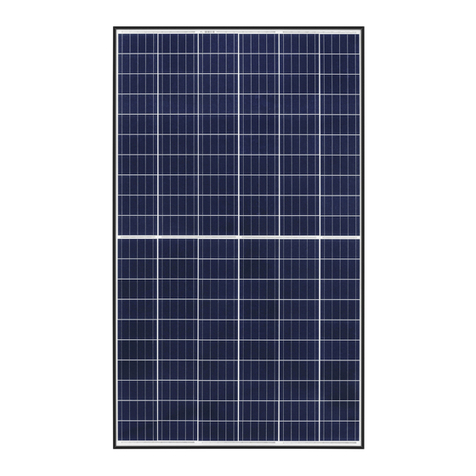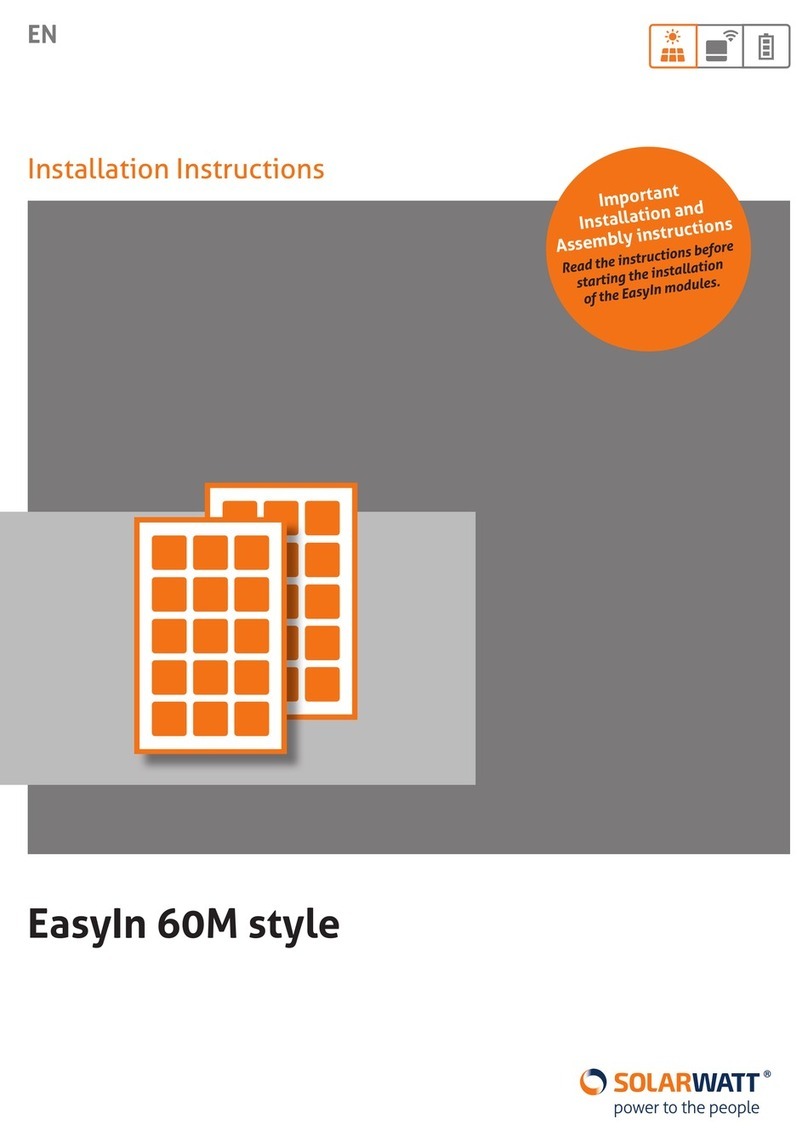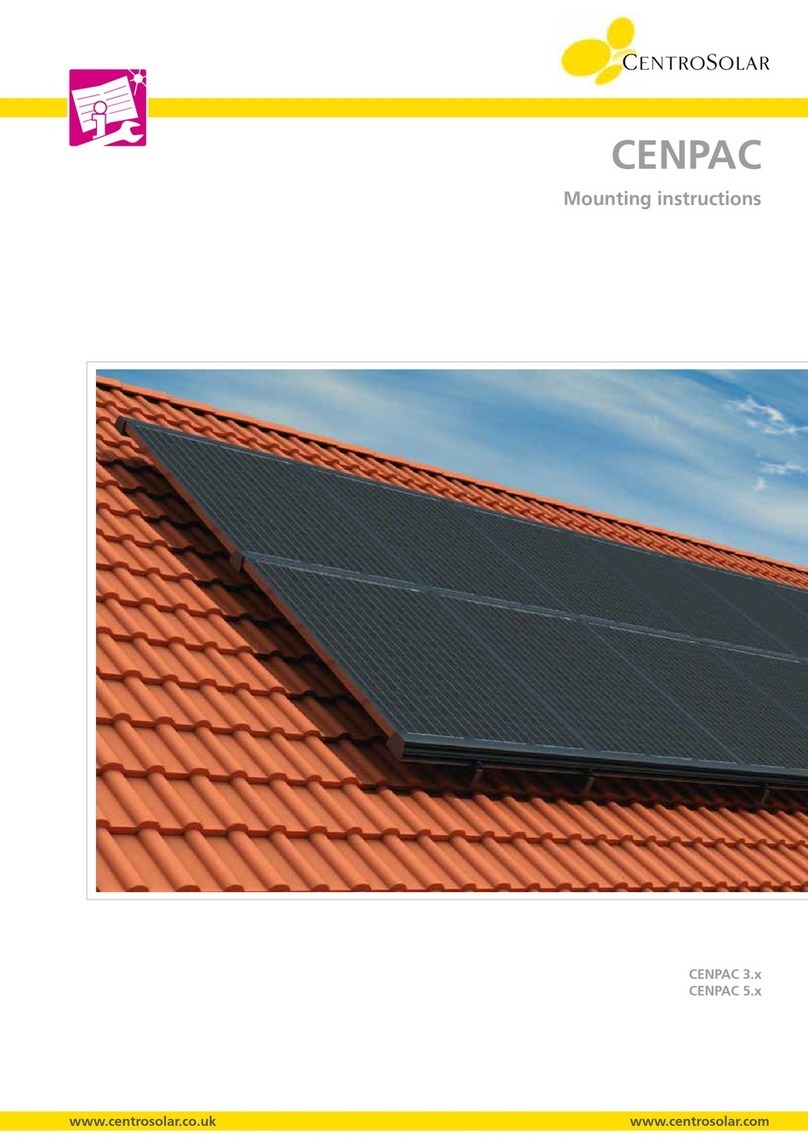
1 Aboutthisguide
Thank you for choosing Centrosolar TF Plate Professional.
If you have questions about the installation or components
of the system, please contact our technical support: +49
(0) 5251 500 500.
The maintenance and operation of a PV system requires
a sound technical knowledge. Therefore, any work on the
system may only be carried out by qualied and authorized
personnel. Make sure to read these assembly instructions
carefully before installing, commissioning or servicing the
system, and store these instructions in a well accessible
location. The guide is part of the product. It only applies to
the solar modules TF Plate Professional by Centrosolar
AG. Pay special attention to the information regarding safe
usage. Cetrosolar is not liable for damage resulting from
disregarding this guide.
Targetgroups
The target group of this guide, especially chapter 4 (Safe
Installation), are skilled craftsmen. Information relevant
for the operator can be found in chapter 6 (Maintenance
and Cleaning).
Informationconcerningyoursafety
orthatofthedevicearehighlighted.
Pleasenote:
Disregarding the instructions of this installation guide may
void any warranties, guaranties and product liabilities.
2 Sitepreparation
The TF Plate Professional modules are sensitive techni-
cal components, which must be handled with utmost care.
Pay special attention during transport or when putting into
interim storage on site and ensure a safe working environ-
ment.
Caution!
Enter TF Plate Professional only
withcorrespondingprotection!
Mechanical strain of the TF Plate Professional can lead to
damage of the photovoltaic cells. Therefore, stepping onto
the photovoltaic laminate is forbidden. If stepping onto the
laminate can not be avoided, use special overshoes and
protective mats or similar protective equipment, to avoid
scratching or damaging the laminate surface. Especially
stepping in between the high beading is only permissible
after proper load distribution, otherwise irreversible deec-
tions of the TF Plate Professional may occur.
Fig. 1: Stepping onto the TF Plate Professional can result in damage.
Caution!
Transportpalletsmayonlybeplaced
onsufcientlystableroofs!
TF Plate Professional is delivered on transport pallets
with considerable weight (approx. 1100 kg). A truck crane
should be used on site to hoist the pallets onto the roof.
Unpacking of TF Plate Professional takes place on the
roof. Prior to hoisting, check if the load capacity of the
roof meets the weight of the fully loaded pallets in the load
area. If in doubt consult a structural engineer.
4
Installation Guide































